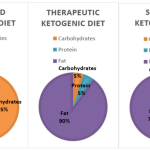The Ultimate Guide To A Powerful Vegetarian Ballerina Diet: Transform Your Body And Mind With Click-Worthy Tips!
Vegetarian Ballerina Diet: A Nutritious Approach to Fueling Dance
Greetings, Healthy People! In the world of ballet, nutrition plays a vital role in supporting the demanding physical requirements of dancers. One dietary approach that has gained popularity among ballerinas is the vegetarian ballerina diet. This plant-based eating plan provides essential nutrients while promoting overall health and well-being. In this article, we will explore the ins and outs of the vegetarian ballerina diet, its benefits, and potential drawbacks. Let’s dive in!
Table: Vegetarian Ballerina Diet Overview
Aspect
Details
What is it?
A plant-based eating plan followed by ballerinas for optimal nutrition and performance.
2 Picture Gallery: The Ultimate Guide To A Powerful Vegetarian Ballerina Diet: Transform Your Body And Mind With Click-Worthy Tips!


Who follows it?
Ballerinas and dancers who choose to adopt a vegetarian lifestyle.

Image Source: pinimg.com
When?
It can be followed throughout a dancer’s career or as a personal dietary choice.
Where?
Vegetarian ballerina diets can be adhered to in any location around the world.
Why choose it?
Benefits include improved energy levels, weight management, and overall health.
How to follow it?
Focus on plant-based protein sources, whole grains, fruits, vegetables, and proper meal planning.
What is the Vegetarian Ballerina Diet?

Image Source: thelewisfoundation.org
The vegetarian ballerina diet is a nutritional approach that emphasizes the consumption of plant-based foods while eliminating meat, fish, and poultry from the diet. It revolves around the idea of obtaining essential nutrients, including protein, iron, calcium, and vitamins, solely from vegetarian sources.
Plant-Based Protein
Plant-based protein sources such as legumes, tofu, tempeh, seitan, and quinoa form the foundation of a vegetarian ballerina’s diet. These protein-rich foods provide the necessary amino acids for muscle repair and growth, aiding in the recovery process after intense dance training.
Abundance of Fruits and Vegetables
Fruits and vegetables are essential components of the vegetarian ballerina diet due to their high nutrient content. They are rich in vitamins, minerals, and antioxidants, which help support the immune system, promote healthy digestion, and enhance overall well-being. Incorporating a variety of colorful produce ensures a wide range of nutrients.
Whole Grains for Sustained Energy
Whole grains, such as brown rice, quinoa, oats, and whole wheat bread, are complex carbohydrates that provide sustained energy throughout the day. They are an excellent source of fiber, which aids in digestion and helps maintain stable blood sugar levels, preventing energy crashes during long rehearsals or performances.
Meal Planning and Preparation
Proper meal planning is crucial for a successful vegetarian ballerina diet. This involves ensuring a well-balanced intake of macronutrients (carbohydrates, protein, and fat) and incorporating a variety of foods to meet nutritional needs. Meal prepping can help dancers stay on track with their nutrition goals, especially during busy rehearsal and performance schedules.
Supplementation Considerations
In some cases, vegetarian ballerinas may need to supplement certain nutrients that are more challenging to obtain solely from plant-based sources. These may include vitamin B12, iron, omega-3 fatty acids, and calcium. Consulting with a registered dietitian or healthcare professional can help determine individual needs and recommend appropriate supplements if necessary.
Advantages and Disadvantages of the Vegetarian Ballerina Diet
Like any dietary approach, the vegetarian ballerina diet has its advantages and disadvantages. Let’s take a closer look:
Advantages
1. Improved Energy Levels: The nutrient-dense nature of the vegetarian ballerina diet can contribute to increased energy levels, allowing dancers to perform at their best.
2. Weight Management: A well-planned vegetarian diet can support healthy weight management, as it tends to be lower in saturated fats and higher in fiber compared to a meat-based diet.
3. Lower Risk of Chronic Diseases: Plant-based diets have been linked to a reduced risk of chronic diseases, including heart disease, diabetes, and certain types of cancer.
4. Environmental Sustainability: Choosing a vegetarian diet has positive environmental impacts, as it requires fewer natural resources and produces fewer greenhouse gas emissions compared to animal agriculture.
5. Ethical Considerations: The vegetarian ballerina diet aligns with ethical beliefs surrounding animal welfare and promotes compassion towards all living beings.
Disadvantages
1. Nutrient Deficiencies: If not carefully planned, a vegetarian diet may result in inadequate intake of certain nutrients, such as vitamin B12, iron, zinc, and omega-3 fatty acids.
2. Protein Quality and Quantity: Plant-based proteins may not always provide the same quality and quantity of essential amino acids as animal-based proteins. Proper protein combining and portion control are important for optimal protein intake.
3. Potential Social Challenges: Following a vegetarian diet may present social challenges, especially during meals with non-vegetarian friends, family, or while traveling.
4. Limited Availability in Certain Settings: Access to vegetarian options may be limited in certain settings, such as remote dance schools or countries with specific cultural dietary norms.
5. Individual Variations: Each person’s nutritional needs and preferences vary, and what works for one dancer may not work for another. Personalization is key when adopting the vegetarian ballerina diet.
Frequently Asked Questions (FAQs)
1. Is it possible to meet protein needs on a vegetarian ballerina diet?
Yes! By incorporating a variety of plant-based protein sources like legumes, tofu, tempeh, and quinoa, ballerinas can easily meet their protein needs. Proper meal planning and portion control are essential for optimizing protein intake.
2. How can vegetarian ballerinas ensure they get enough iron?
Iron-rich plant-based foods, such as dark leafy greens, lentils, fortified cereals, and beans, can help meet the iron requirements of vegetarian ballerinas. Consuming vitamin C-rich foods alongside iron sources enhances iron absorption.
3. Do vegetarian ballerinas need to take supplements?
In some cases, supplementation may be necessary to ensure adequate intake of certain nutrients like vitamin B12, which is primarily found in animal-based foods. Consulting with a registered dietitian or healthcare professional can help determine individual supplementation needs.
4. Can the vegetarian ballerina diet support muscle growth and recovery?
A well-planned vegetarian ballerina diet can provide the necessary nutrients for muscle growth and recovery. Proper protein intake, along with adequate calorie and carbohydrate consumption, supports the repair and rebuilding of muscles after intense dance training.
5. Can vegetarian ballerinas consume enough calcium without dairy products?
Absolutely! Calcium-rich plant-based sources include fortified plant milk, tofu, tempeh, leafy greens, and sesame seeds. Combining these foods with adequate vitamin D intake and weight-bearing exercises promotes optimal bone health.
Conclusion: Embrace the Nutritional Harmony of the Vegetarian Ballerina Diet
In conclusion, the vegetarian ballerina diet offers a nutritious approach to fueling dance. By focusing on plant-based protein sources, abundant fruits and vegetables, whole grains, and proper meal planning, ballerinas can optimize their nutrition and performance. It’s important to consider the advantages and disadvantages of this dietary approach and personalize it based on individual needs and preferences.
Remember, consulting with a registered dietitian or healthcare professional is invaluable in ensuring a well-rounded vegetarian ballerina diet that meets all nutrient requirements. Embrace the nutritional harmony of this plant-powered eating plan and dance your way to health and happiness!
Final Remarks
Disclaimer: The information provided in this article is for educational purposes only and should not replace professional medical advice. Every individual is unique, and it is essential to consult with a registered dietitian or healthcare professional before making any significant changes to your diet.
This post topic: Diet


